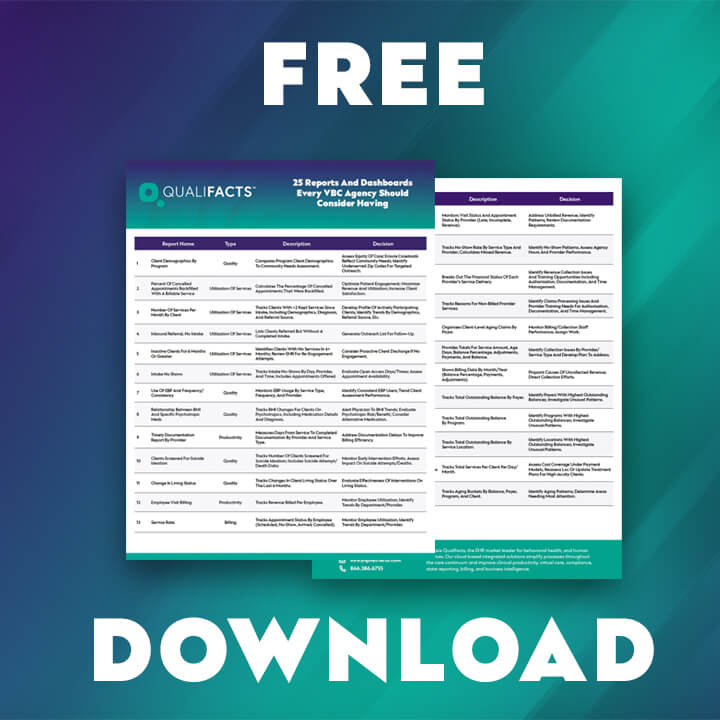If you are currently a Community Behavioral Health Clinic (CCBHC) and are looking to enhance, improve, or expand your CCBHC, the Certified Community Behavioral Health Clinic Improvement and Advancement Grant, is a funding option you should consider. While the application process is rigorous, the benefits of being a CCBHC to the people you serve, your community, and your agency are unparalleled. Here are tips that should help you along the way:
Tip 1: Understand and Implement the Updated SAMHSA CCBHC-IA Grant Application Criteria
By now, you should have read the updated version of the CCBHC criteria to comply by July 1, 2024. The changes overall are positive in that they seek to lessen administrative burden and to clarify earlier criteria.
Tip 2: Update the Community Needs Assessment
As a grantee, you will be expected to conduct community needs assessments over the course of the project. Start with your current assessment and use it as a template which you will then update.
- The US Census Bureau has up-to-date stats on the demographics of your community. This is a good place to start to document your understanding of the language and cultural needs of your community. This data will also be beneficial for your Diversity Impact Statement.
- The Center for Disease Control (CDC) has data on all types of national mental health issues including SUD, mental health in the workplace, and targeted topics like tobacco use specific to people with mental health conditions.
- You will also want to conduct an updated community survey and compare it to your original survey. I Include information related to the impact your clinic has had, based on the change in survey responses. This is valuable content for your application and a reflection of the quality of your CCBHC’s services.
Tip 3: Project the Number of Clients You Will Be Able to Serve
By now you should know how accurate you were predicting the number of clients you would be able to serve annually as a CCBHC. Use this experience and the community needs assessment to predict the number of clients you will serve each year of the project.
Tip 4: Create or Update the Project Plan
Ideally, you used a project plan for assigning tasks, tracking progress and completing your initial CCBHC proposal and launch. This is an ideal time to update this project plan. If you were able to carry out the launch of your CCBHC without a project plan, well kudos! However, we strongly suggest you use one for this CCBHC-IA grant application as it will guide you through the execution of the commitments you make during the application process.
Tip 5: Take a Hard Look at CCBHC Technology Needs
Now is the time to take a serious inventory of your technological needs and gaps. Some of the most common ones are data reporting and interoperability. You need excellent transparency into clinical and operational data and the ability to share “rightfully consented” data about shared clients among approved entities, such as the primary care provider or emergency department.
Qualifacts provides a free CCBHC Readiness Health Information Technology Checklist to help you identify your agency’s technological needs to meet the CCBHC criteria efficiently and effectively. It outlines the critical areas to focus on when choosing an EHR solution for your CCBHC.
Tip 6: Reach Out for Help in Developing Your Sustainability Plan
The sustainability plan may be one of the most challenging deliverables needed for the CCBHC-IA grant application. The requirement states that within one year of the award, you will need to develop and implement a sustainability plan to support service delivery when federal funding ends. The sustainability plan is to be updated annually.
Tip 7: Participate in SAMHSA’s Technical Assistance Center activities
You should participate in the SAMHSA provided CCBHC Technical Assistance Center activities. These will provide guidance to CCBHC-IA grant recipients related to CCBHC model adherence, certification, sustainability, access to care, and evidence-based practices. Resources include a library of official documentation, webinars, training events and most importantly, one-on-one consultation requests. All of this is available free of charge.
Tip 8: Assess your Current Evidence-Based Practices (EBPs)
At this stage of the CBHC-IA grant application, you should evaluate the impact of your current EBP’s and determine what changes need to be made. Make sure to include your EBP success stories in your application narrative. If an EBP isn’t producing results, consider alternative or additional practices. You will need accurate and detailed data from your EHR to evaluate the impact your EBPs had on specific populations. We recommend visiting the SAMHSA Evidence-Based Practice Resource Center and SAMHSA’s National Network to Eliminate Disparities for more information.
Tip 9: Analyze Your Project Performance Measures & Make Changes
As part of this application process, you will need to provide specific information about how you will collect the required data for this program and how it will be used to manage, monitor, and enhance the program. You need an assessment of the current state of your CCBHC and provide information about how you will improve your performance with the grant. Some of the possibilities include new or different EBPS, enhanced access to care, new outreach activities, additional providers, modified workflows, and improved resource utilization.
- Consider reporting on the following factors in your snapshot of health of your CCBHC:
- Number of clients served versus committed to serving per project year
- Number and types of service delivered year-to-year
- Diagnoses of people served
- Change in mental health functioning outcomes
Tip 10: Update your Disparity Impact Statement (DIS)
Using the reporting capabilities of your EHR, how well does the population of the people you serve in your CCBHC reflect your community? Do you have adequate language and cultural support in your CCBHC to support the population as represented in community assessment? How often do you look at this data and pivot to make improvements? We recommend you compare real time data from the EHR to the findings and commitments made in your historical DIS and use that information to design a new and improved DIS.
Conclusion
The CCBHC-IA grant provides a significant opportunity to improve and advance your current CCBHC, but first you need a clear and accurate understanding of where you are today. Qualifacts is available to discuss the CCBHC-IA Grant application, contact Qualifacts CCBHC Program Manager, Mary Givens, using the form below for assistance.



